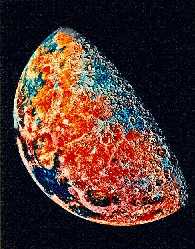This image shows spectral information collected from the Earth's moon.
Click on image for full size
NASA
Spectra
Minerals of a planet's surface, and molecules of an atmosphere give off light of various colors. Some rocks emit more light in the blue end of the spectrum than the red, and so on. These colors are very hard to see without special cameras. The colors are different for each individual mineral or molecule, and is called that mineral or molecule's
spectra. Thus the spectra of a mineral or molecule is like a human fingerprint, and can be used to identify it.
When studying the planets, scientists use special cameras which can collect separate colors of light. Instruments such as these help scientists determine what a planet is made from. Such an instrument is called a spectrometer.
The picture shows what information is gained from spectra. (The colors of the picture have been falsely changed). Pink is very old pulverized ground, oranges and blues are lava flows, light blue are areas which are rich in minerals which have come from meteorites.
You might also be interested in:
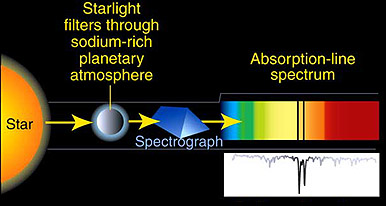
You probably know there are nine planets in our own solar system...but did you know that we know of 76 planets that are outside our own solar system? These planets orbit other stars and are called extrasolar
...more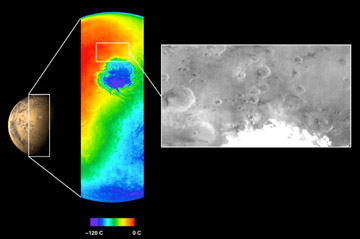
The Mars Odyssey was launched April 7, 2001, from Florida. After a six-month, 285 million-mile journey, the Odyssey arrived at Mars on October 24, 2001. The Odyssey is in its aerobraking phase right now.
...more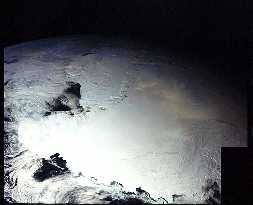
Pluto is so far away, and has never been explored. Questions to answer about Pluto include the following: What are the geologic features of the surface. (pictures of the surface) If there are bare spots,
...more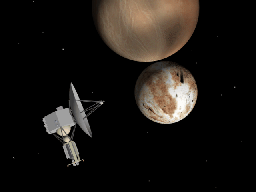
AU stands for Astronomical Units. It is a useful way to measure the distances in interplanetary space. It is the distance between the Earth and the Sun, which is about 93 million miles. For reference,
...more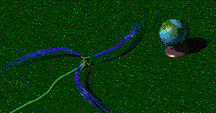
The solar wind is formed as the Sun's top layer blows off into space, carrying magnetic fields still attached to the Sun. Gusts form in the solar wind associated with violent events on the Sun. Particles
...more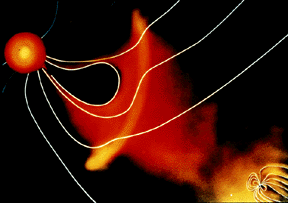
For a planet to be affected by a blob of material being ejected by the sun, the planet must be in the path of the blob, as shown in this picture. The Earth and its magnetosphere are shown in the bottom
...more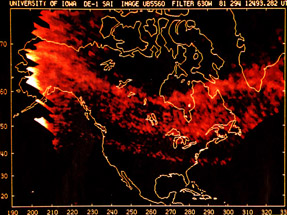
The aurora we are most familiar with is the polar aurora. This is what people are talking about when they say the northern or southern lights. But there are other less-known aurora, such as SAR arcs.
...more


